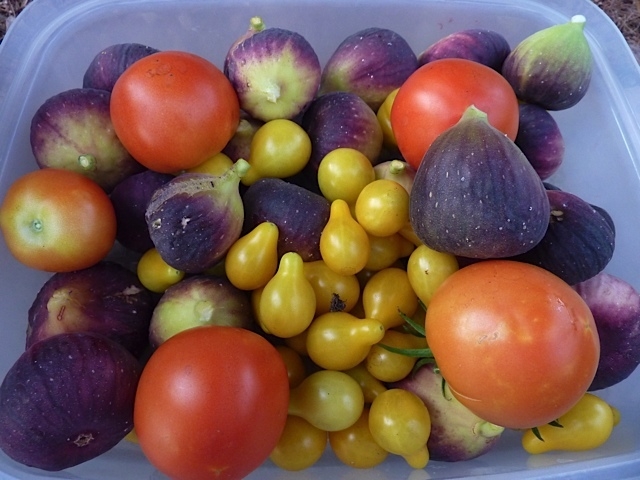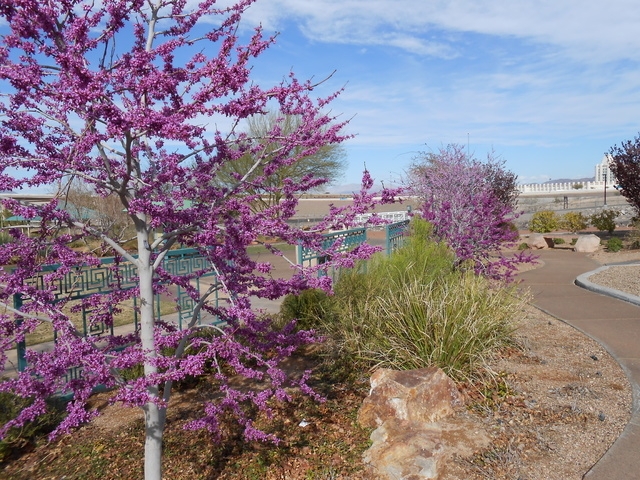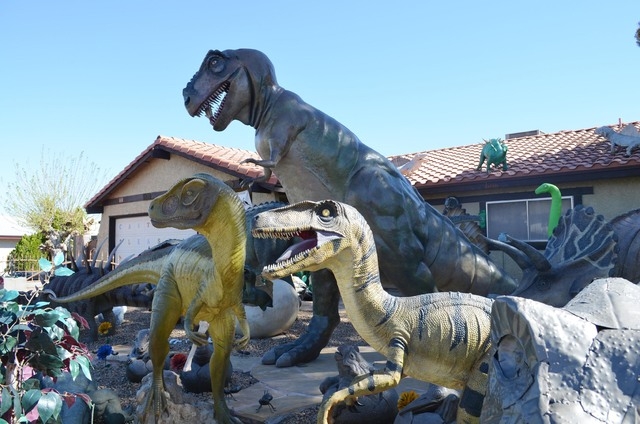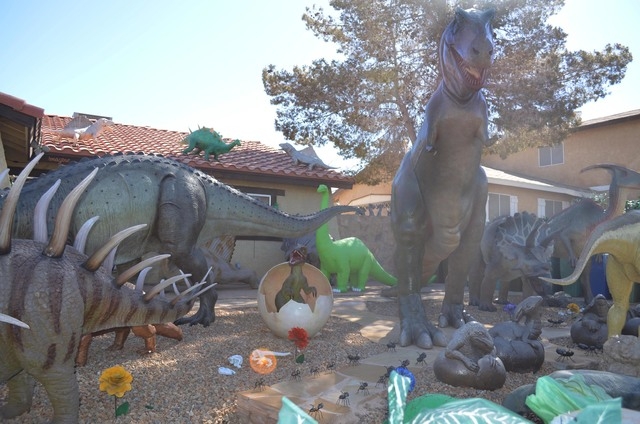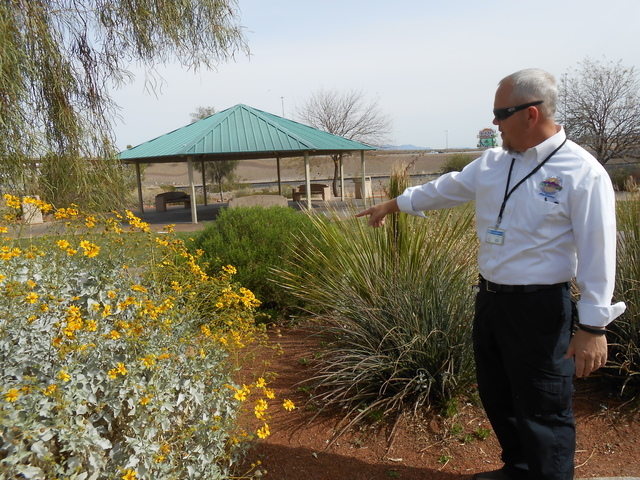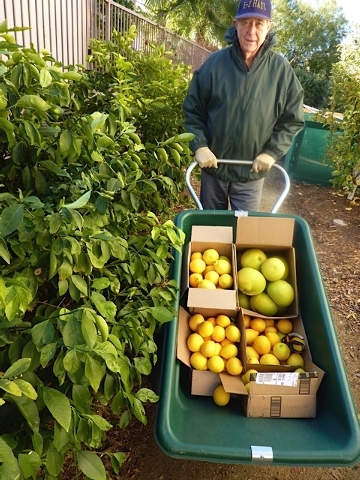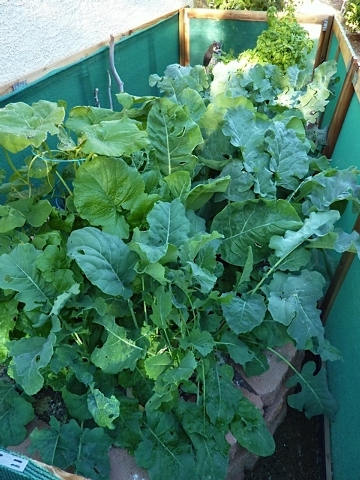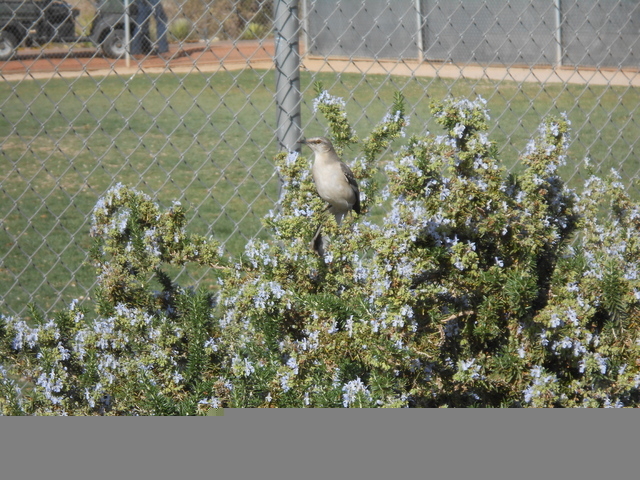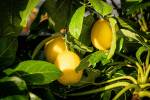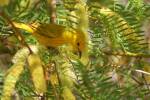Henderson serves as home to thriving public and private gardens
Even though the Las Vegas Valley is known for its desert climate, Henderson residents have shown there are still ways to be creative when it comes to gardening.
“One of the misconceptions about planting in the desert is you can’t get beautiful colors,” said Preston Goodman, a horticulturist with the city of Henderson. “That’s not true. That’s actually the opposite. Drought-tolerant doesn’t mean they can’t be pretty.”
Colors pop out from plants throughout the Acacia Demonstration Gardens, 50 Casa Del Fuego St.
The desert marigold on one side of the path shows a yellow flower, while spreading rosemary on the other side is thick with blue flowers.
Whether it is a plant that has a tropical feel or a shrub that is allergy-friendly, the garden has plenty of amenities.
“Different times throughout the year, you’ll see bright yellows and reds,” Goodman said.
While some might bloom seasonally, he said others, such as the red bird of paradise plant, bloom year-round.
It’s not just colors people can see.
“The Mountain Laurel is a really nice flower that smells like bubble gum,” he said.
Though the garden exists in the desert, it shows that anyone can grow a variety of plants at home.
Goodman said gardeners need to be aware of misconceptions about growing in this climate.
One misconception is about the heat.
Goodman said just because a plant’s tag at the nursery indicates it can tolerate heat doesn’t necessarily mean it can survive the constant intensity of a Las Vegas sun.
“Being in the 100-degree heat for consecutive days, a lot of plants will burn up,” he said. “You can’t give them enough water.”
But when people try to overcompensate with water, that is when Goodman said they can run into other problems.
“People drown them,” he said.
He added that many plants are drought-tolerant, which means the plants are better equipped at retaining water for longer periods of time.
“When you water it, it holds onto the water,” he said.
Aside from learning tips about plants’ living conditions, Goodman suggests that people research which plant is the right fit for their garden.
“Some people don’t realize how big these plants get,” he said. “They go to the nursery and see the smaller version with no clue what it will look like once it matures.”
He said the Texas ranger shrub is a perfect example.
“People don’t realize it can get up to 12 to 15 feet tall,” he said.
The city of Henderson doesn’t just talk about the possibilities of developing a garden in the desert. Since 1998, the city demonstrates it with its Acacia Demonstration Gardens.
“It’s designed to showcase what we can do in a desert landscape,” Goodman said.
The garden is a collaborative effort between Henderson and the Conservation District of Southern Nevada.
Goodman said there about 10 to 12 classes throughout the year to talk about native materials, keeping up a garden in desert climate and various other tips.
The next class is scheduled for April 5.
Acacia Demonstration Gardens is open from 6 a.m. to midnight daily.
For more information, visitcityofhenderson.com/parks.
MASTERING GARDENING IN HENDERSON
While the city of Henderson showcases various plants, some residents have discovered gardening tips through trial and error.
When Jeneane Young moved to Henderson in 2005, she thought she would never have a garden in her backyard.
“It is a different world out here,” she said. “I thought, ‘How can anyone grow in this climate?’ ”
After participating in the Nevada Cooperative Extension’s Master Gardener program, she learned that anything is possible.
“If you work at it, you can do it,” she said.
Young started with roses. Since then, her backyard has produced a variety of fruits and vegetables such as apricots, pomegranates, grapefruit, apples, peaches and figs.
“Each year we get more and more fruit,” she said. “We get more lemons than we can keep.”
She has learned that even with hard work, some items don’t do well in Southern Nevada.
“It gets too cold here for lime trees,” she said. “Just because they sell it in a nursery doesn’t mean it will grow here.”
Young is waiting a few more weeks to start planting for the new season.
“You don’t want to plant too early,” she said. “You don’t know if you’ll get a cold front.”
Young is slated to teach a free Trees, Trees and More Trees class at 9 a.m. April 12 at the Acacia Demonstration Gardens as part of a Master Gardener series.
A YARD TO REMEMBER
Though it might not be a traditional garden, Steve Springer wants his yard to be historic — prehistoric, to be exact.
While neighbors have planted trees and plants, Springer’s yard at 733 Greenway Road showcases dinosaurs.
“It started back in 2006,” he said. “Now we have 37 from all over the world.”
The Tyrannosaurus rex towers over the triceratops, velociraptor and various other creatures in his yard.
“We have a few more pieces coming,” Springer said. “We haven’t revealed what they are yet. We want to surprise people.”
Changing throughout the various seasons, the yard has served as an attraction for children throughout Henderson.
“I get pleasure seeing a kid’s eyes light up,” he said.
In 2013, he had more than 1,900 trick-or-treaters come through the yard. Overall, he estimates that more than 100,000 people have visited his collection.
“We probably get close to 30 or 40 people a day,” he said.
Just remember to not feed the dinosaurs — which is written on his garage door.
Springer enjoys the dinosaur garden over a traditional yard.
“I have gotten to meet more people because of it,” he said. “People come from all over to see it. I think that’s neat.”
Contact Henderson/Anthem View reporter Michael Lyle at mlyle@viewnews.com or 702-387-5201, Follow on Twitter @MjLyle.
FOR MORE SPRING STORIES
Visit https://www.reviewjournal.com/life/home-and-garden/spring-gardening for spring gardening stories from around the valley.
TO BE A MASTER GARDENER
To become a Master Gardener, people must complete 80 hours of training, which consists of 20 classes of instruction offered by the University of Nevada Cooperative Extension.
Classes are offered from 8:30 a.m. through 12:30 p.m. Mondays, Wednesdays and Fridays during annual spring semesters. Classes include three hours of lectures and one hour of hands-on activities. There is a $200 fee charged to offset program expenses.
Participants must sign an agreement to volunteer 50 hours a year to the program in order to stay certified as a Master Gardener. They answer phone calls, send out informational materials and develop community gardens.
The extension also offers community classes open to gardeners of all skill levels throughout the year.
For more information, visit www.unce.unr.edu/programs/sites/mastergardener/southern or call 702-257-5501.



